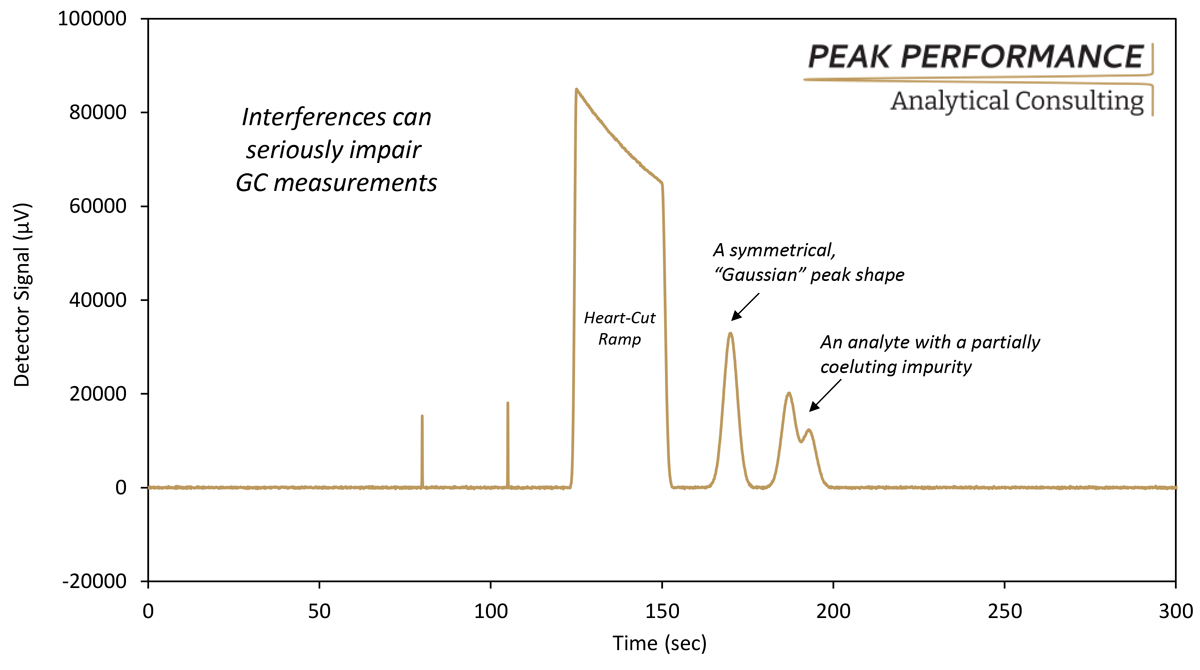Sometimes an irregularity can appear in a chromatogram that interferes with the clean, accurate quantitation of an analyte peak. An unanticipated sample stream impurity that co-elutes, or partially co-elutes, with an analyte is the technical definition of an interference, and it is very serious because one cannot distinguish how much of the peak is your analyte, and how much is the co-eluting impurity.
There are also numerous other forms of chromatogram interferences, such as grandfather peaks, valve pulses, baseline upsets, and baseline noise, all of which can hinder or seriously impair the accurate quantitation of your analytes. Regardless of the cause of the interference, the end result is the same: inaccurate or imprecise process GC data, and it must be addressed.
How do you know if something is interfering with your process GC measurement? Look in your chromatograms for any indications that your analyte peak is not symmetrical and “Gaussian” in shape (see figure), or that it is not being correctly detected and integrated. That’s usually the easy part. The hard part is determining the underlying cause and how to fix it.

Fortunately, you now have the opportunity to learn this and other key troubleshooting skills directly from an industry expert, R. Aaron Eidt. Contact Aaron for direct assistance resolving your process GC issues.